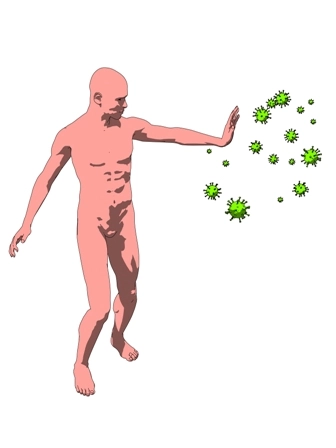Pediatric Coding Alert
Bust These 4 Myths, Understand Food Allergy/Intolerance Dx
Keep your codes straight with a little clinical knowledge. If the difference between a food allergy and food intolerance is confusing to you, you’re not alone. While the two conditions may sound alike, they are very different, both in the way they affect your patients and the way you code them. No wonder, then, that they have been the source of plenty of coding myths. In this article, we’ve selected four of them to bust. Myth 1: Food Intolerance is Coded the Same Way as Food Allergies This myth is easily busted once you understand the etiologies of the two conditions. Basically stated, “food allergies, such as allergies to nuts or shellfish, are caused by a problem with your immune system. Food sensitivities or intolerances, such as reactions to wheat or milk, are caused by a problem with your digestive system,” according to the U.S. Department of Health and Human Services (HHS) (Source: www.womenshealth.gov/healthy-eating/food-allergies-and-sensitivities). The difference between the two is critical from a clinical perspective. “An allergic food reaction can be severe or life-threatening, whereas food intolerance symptoms are generally less serious. For example, a true food allergy to peanuts could cause an anaphylactic reaction, while someone with a food intolerance, such as to lactose, will get diarrhea and experiencing bloating,” notes Donelle Holle, RN, president of Peds Coding Inc., and a healthcare, coding, and reimbursement consultant in Fort Wayne, Indiana. From a coding perspective, this means you have to look to different chapters of ICD-10 to find the codes you need to describe a patient’s food allergy or sensitivity status. Food allergy codes are easily found as they have their own subcategory of codes — Z91.01- (Food allergy status). Food intolerance codes, however, are a little more difficult to track down, though many of them can be found in the Diseases of the Digestive System chapter and coded to the K90.4- (Other malabsorption due to intolerance) ICD-10 subcategory. Myth 2: Milk Intolerance Is Not a Digestive Disease, so Use the Milk Allergy Code Again, a knowledge of the condition’s etiology helps you understand the way the condition is coded. Patients who suffer from the condition “cannot break down sugar in dairy products due to a deficiency in the enzyme lactose,” Holle explains. Because of this, the code is categorized in the Endocrine, Nutritional and Metabolic Diseases chapter of ICD-10 and not in the Diseases of the Digestive System chapter. This means you should use a code that is specific to lactose intolerance from the E73.- (Lactose intolerance) codes. It also means you should not use Z91.011 (Allergy to milk products). This is reinforced by the Excludes1 note to Z91.011, which tells you should not code Z91.011 with a code from E73.-. Myth 3: You Can Use the Celiac Disease Code to Code Gluten Sensitivity This myth comes from confusion over synonyms and over the similarities between the conditions. Both gluten sensitivity and celiac disease share common characteristics: in both, the body responds negatively to the gluten protein, which is found in food made using cereal grains such as wheat, oats, rye, and barley. But the two conditions differ in their effects on the human body, with gluten sensitivity causing minor, short-term symptoms such as stomachaches and bloating and celiac disease causing such long-term health problems as malabsorption and bowel damage. That’s why you must choose carefully between two different diagnosis codes in situations where a patient is affected by an adverse reaction to gluten. You’ll use K90.0 (Celiac disease) if your pediatrician documents it, and K90.41 (Non-celiac gluten sensitivity) for gluten sensitivity that is less serious. Just be sure to look for the celiac and non-celiac designations. Expert coding tip: The K90.4- (Other malabsorption due to intolerance) codes have an Excludes2 instruction that allows you to code both celiac and non-celiac gluten sensitive enteropathy and lactose intolerance (K90.0, K90.41, and E73.-) together when your pediatrician documents them. Myth 4: You Can Use the Peanut Allergy Code for all Nut Allergies This time, a knowledge of plant biology helps to dispel this myth, though a close reading of the ICD-10 code synonyms will actually tell you all you need to know. As peanuts are not nuts but are classified as legumes, they are not actually related to the tree nut family. That tells you that you should use Z91.010 (Allergy to peanuts) exclusively for patients who are allergic to peanuts. This is reinforced by the synonym for Z91.018 (Allergy to other food), which tells you the code can be used for allergies to nuts other than peanuts. And the absence of an Excludes1 note for both codes tells you that it is possible for a patient to be allergic to both foods even though the nuts are different plant species.

Related Articles
Pediatric Coding Alert
- Preventive Care:
Get the Answers to Your Frequently Asked School Physical Questions
Are you ready for the back-to-school crew? School and athletic physicals are an annual rite [...] - Mythbusters:
Bust These 4 Myths, Understand Food Allergy/Intolerance Dx
Keep your codes straight with a little clinical knowledge. If the difference between a food [...] - Procedure Coding:
Avoid Bundling Bloopers and Modifier Misunderstandings for Perfect Spirometry Coding
You’ll be breathing a sigh of relief if you remember these 3 things. Pulmonary testing [...] - You Be the Coder:
Use This Code and MDM Level When Depression, Anxiety Linked
Question: How do you code a patient who has depression and anxiety? Do you code [...] - Reader Questions:
Follow the Instructions for CLIA-Compliant Testing
Question: Is there an age limit associated with a respiratory syncytial virus (RSV) test billed [...] - Reader Questions:
See the Difference Automatically Between These 2 Urinalysis Tests
Question: I am confused by the terms “automated” and “non-automated” when it comes to urinalysis [...] - Reader Questions:
Check Your Calendar for Initial Hospital Care Date Billing
Question: A baby was born in the hospital on 6/1. On 6/2, our pediatrician performed [...]




